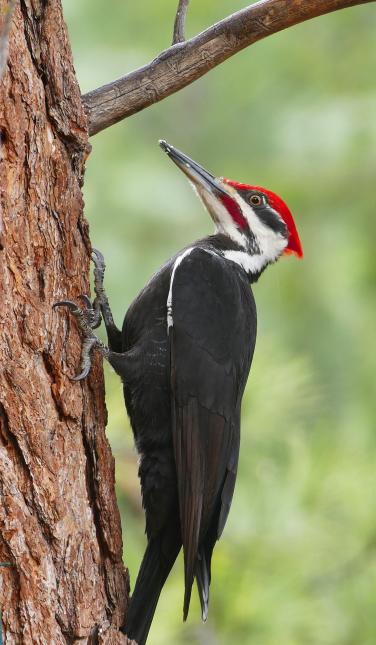Understanding Woodpeckers in Florida: Actions, Variety, and Environments
Wiki Article
Unveiling the Tricks of Woodpeckers: Actions, Habitat, and Much More
Woodpeckers, with their special habits and specialized adjustments, have long captivated scientists and nature enthusiasts alike. By revealing the enigmas bordering woodpeckers' habits and habitat choices, a much deeper understanding of these bird wonders emerges, offering a glance right into their interesting world.Woodpecker Behavior Insights
In examining woodpecker actions, a remarkable screen of specialized skills and adjustments arises, dropping light on their remarkable ecological particular niche - Woodpeckers in Florida. Woodpeckers, understood for their distinctive drumming on trees, have a range of behavioral attributes that add to their survival and success in their atmosphere. One key actions is their drumming, which serves multiple functions such as communication, developing area, attracting friends, and finding food resources. This rhythmic pecking additionally showcases their remarkable toughness and endurance, as they can hammer away continuously at broadband without triggering injury to themselves.In addition, woodpeckers display an one-of-a-kind feeding behavior identified by their ability to essence pests from tree bark using their specialized beaks. Their long, barbed tongues help in capturing victim, while their solid neck muscles supply security and precision during pecking activities. This feeding strategy enables woodpeckers to accessibility hidden insect larvae and extract them with exceptional efficiency.
Habitat Preferences and Choice
What variables influence the habitat preferences and choice of woodpeckers? Woodpeckers are very adaptable birds known to populate numerous settings worldwide. They do exhibit preferences for specific habitat attributes. One crucial factor influencing woodpecker habitat choice is the accessibility of appropriate nesting websites. Woodpeckers commonly favor woodlands with a mix of fully grown trees that provide ample opportunities for cavity excavation. These cavities work as important nesting and roosting sites for woodpeckers and are vital for their reproducing success.In addition, woodpeckers show a preference for habitats with a bountiful supply of food resources. They are mainly insectivorous, feeding upon beetles, ants, larvae, and other pests located in worn out wood or tree bark. Therefore, woodpeckers tend to prefer wooded areas with a varied insect population to meet their nutritional requirements.
Moreover, the visibility of dead or decaying trees is an additional crucial consider woodpecker environment choice. These trees not only give food sources yet likewise offer ideal substrate for dental caries excavation. Dead trees are vital for the maintenance of healthy and balanced woodpecker populations, as they play a crucial role in the woodpeckers' life process and community characteristics.
Feeding Practices and Diet Regimen Structure
Woodpeckers demonstrate a specialized feeding habits concentrated on foraging for pests within various habitats. In enhancement to pests, woodpeckers also take in tree sap, fruits, nuts, and seeds, including selection to their diet depending on the season and accessibility of food resources.The foraging strategies of woodpeckers are well-adapted to their arboreal way of living (Woodpeckers in Florida). Their go to this web-site capacity to dig a fantastic read deep into timber not just gives them with food yet additionally helps in creating nesting tooth cavities and developing areas. Woodpeckers play a crucial role in maintaining the health and wellness of forests by regulating insect populaces and assisting in the disintegration of wood. Recognizing their feeding habits and diet plan composition is vital for conservation efforts intended at maintaining these special and useful birds.
Drumming Appears and Interaction
Utilizing quick drumming audios on different surfaces, woodpeckers use an unique form of interaction to indicate territory borders and draw in mates. This drumming actions is not only a method of communication but additionally functions as a means for woodpeckers to establish their presence within a specific area. The strength, speed, and pattern of the drumming can share essential details to other woodpeckers around.Woodpeckers utilize drumming sounds to reveal great site their presence in an area and to warn off possible intruders. The loud and recurring nature of the drumming acts as a clear signal to various other woodpeckers that the location is already asserted. This helps in minimizing conflicts and lessening physical confrontations in between people.

Survival Adaptations and Specialized Composition

Final Thought
Finally, woodpeckers exhibit unique actions, such as drumming sounds for communication, and have actually specialized composition for survival in their chosen environments. Their feeding routines and diet make-up additionally demonstrate their flexibility to different environments. By recognizing these elements of woodpeckers, researchers and preservationists can much better protect and maintain these interesting birds and their ecosystems.Report this wiki page